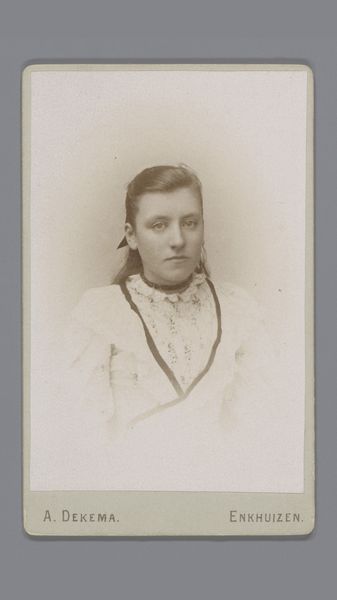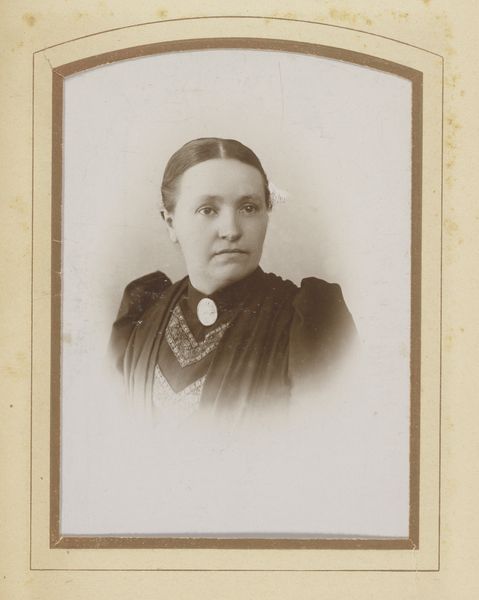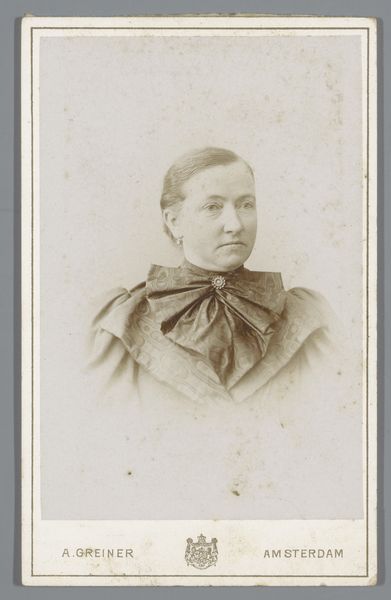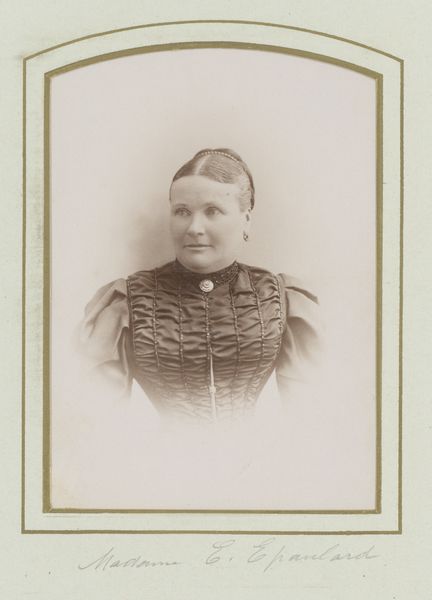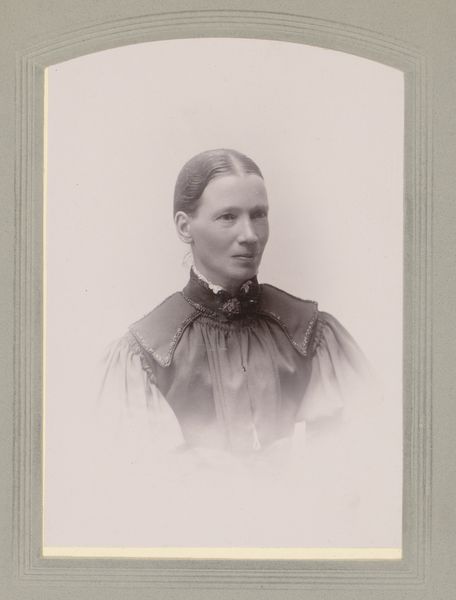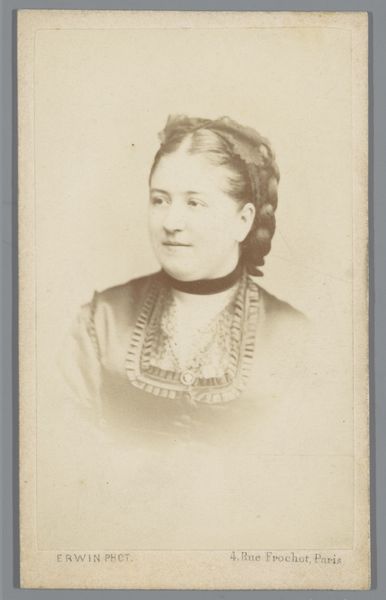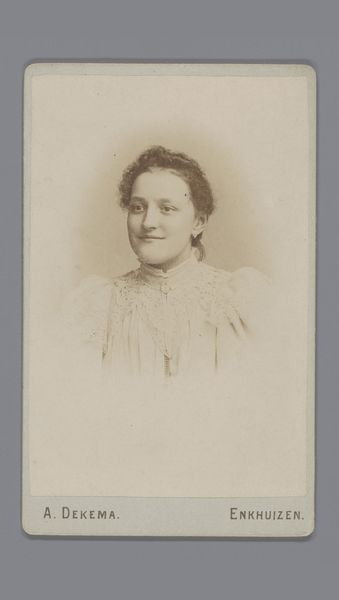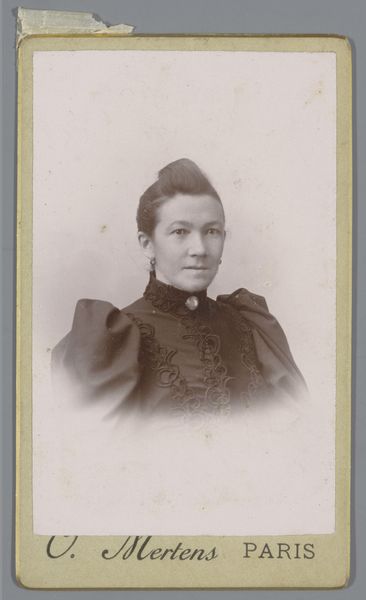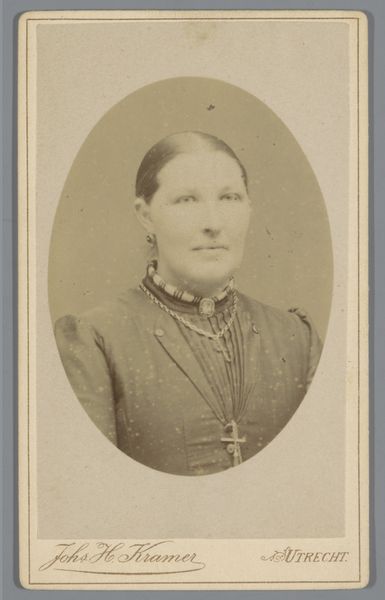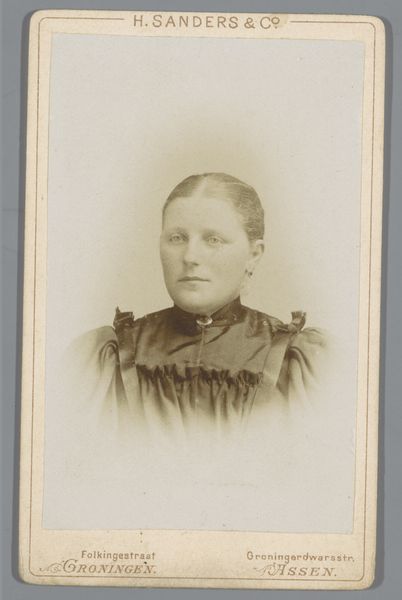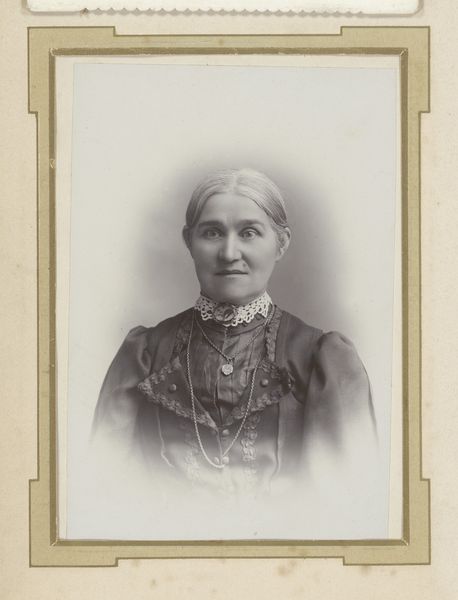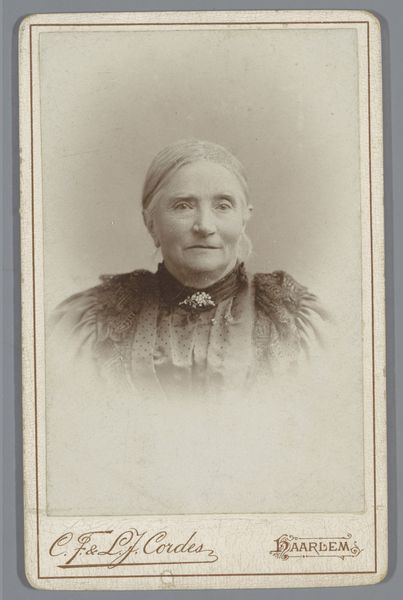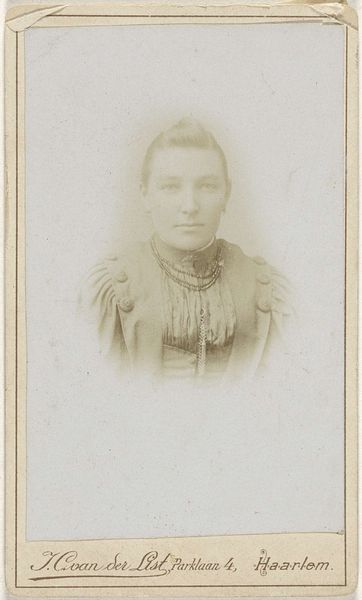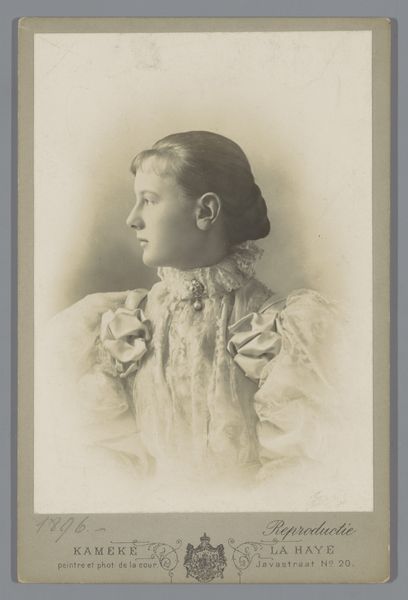
photography
#
portrait
#
aged paper
#
vintage
#
yellowing background
#
photography
#
realism
Dimensions: height 139 mm, width 98 mm
Copyright: Rijks Museum: Open Domain
Editor: This is a photograph titled "Portret van een onbekende vrouw" by J.W. Wentzel, taken sometime after 1890. The aged paper gives it such a nostalgic feel. I’m immediately struck by the subject’s stern, almost unwavering gaze. What’s your interpretation of this work? Curator: Considering the photograph’s vintage, it provides us a snapshot into the socio-political context of that era. These studio portraits, becoming increasingly common, were often the first and only time many people had their likeness captured. Given this, what can you glean about the democratization of image-making and the construction of identity at that time? Editor: That’s a good point! It’s like photography was democratizing representation, but only for those who could afford it, reflecting class structures. How might her dress and demeanor reflect those values? Curator: Exactly! Her attire, though perhaps not overtly extravagant, signals a certain level of respectability and adherence to societal norms. The very act of sitting for a portrait – the stillness, the controlled expression – all contributed to a specific construction of the self for public consumption. Editor: It’s amazing to consider all these elements when you have this context. I see this now as an intimate yet public performance. Curator: Precisely! And by analyzing the politics of imagery production, we uncover deeper societal values and structures embedded within what seems like a simple portrait. We can almost read her story, through what she reveals and what she chooses to conceal. Editor: I'm leaving with a whole new appreciation for studio portraits and what they signify about society. I need to read more about this history!
Comments
No comments
Be the first to comment and join the conversation on the ultimate creative platform.
